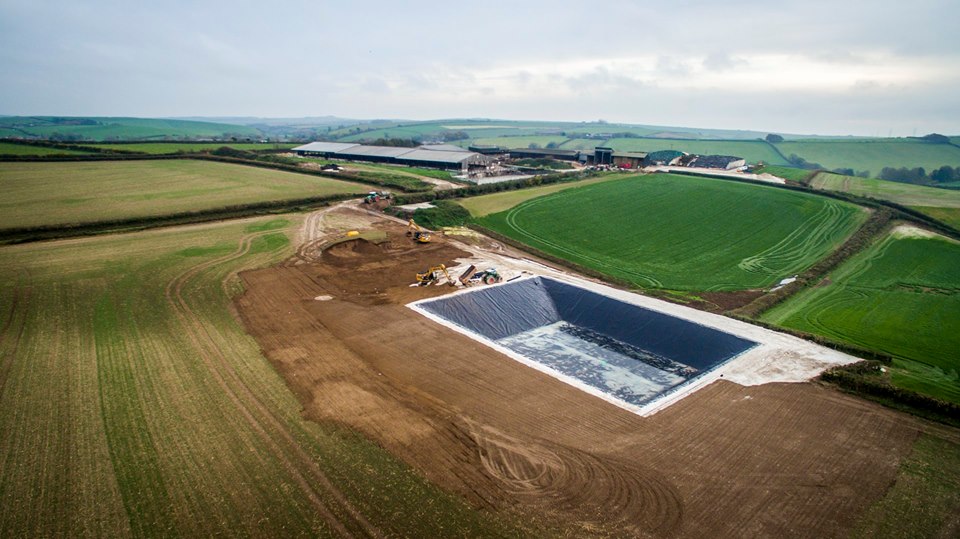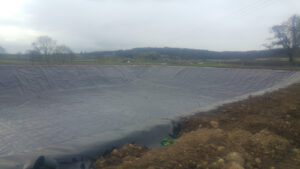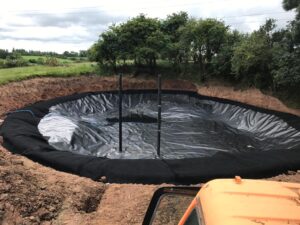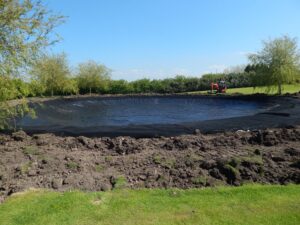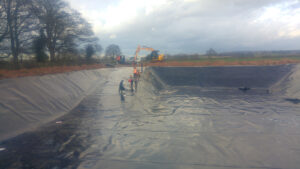Deploying a liner is a critical step in ensuring its effectiveness in containment systems like landfills or reservoirs. This process demands meticulous attention to detail and adherence to specific procedures to guarantee optimal performance and longevity.
Surface Preparation: Before laying the liner, a thorough inspection of the surface is essential. Removing any debris that could potentially damage the liner or impede its smooth deployment is crucial. This meticulous cleaning ensures a pristine surface for the liner’s installation.
Roll Deployment: The manner in which rolls are deployed significantly impacts the welding requirements and the overall efficiency of the process. To minimise welding needs, strategic placement of rolls as per predetermined design or blueprint is vital. Specifically, when dealing with slopes, careful vertical laying and unrolling techniques are applied to prevent free unrolling downhill. Curved slopes might require diagonal cuts to ensure proper alignment for welding.
Wrinkle Prevention and Anchoring: Installers take precise precautions to prevent wrinkling, a factor that could compromise the liner’s effectiveness. Anchoring the linings, often done using sandbags or tires, ensures the laid liner remains secure and stable during and after deployment.
Welding Procedures: Qualified technicians undertake the critical welding process. Two primary welding techniques—double hot metal wedge welding and extrusion welding—are commonly used. The former is preferred for its reliability. Prior to welding, the surface area must be free of any debris or foreign materials. Extrusion welding demands careful removal of oxidation and debris generated from grinding.
Field Seaming: Seaming, particularly on slopes, demands careful attention to minimise the number of seams on corners or irregular shapes. Welding multiple rolls together using a T-joint configuration is limited to three rolls to maintain structural integrity. Ensuring proper overlap and dry, clear conditions during welding are crucial aspects of this process.
Field Testing: Post-installation, thorough testing is imperative to validate the integrity of welds. Non-destructive tests such as air pressure or spark tests verify the quality of fusion and extrusion welds. Destructive tests like sheer or peel tests evaluate the seam’s strength. These tests are conducted at specific intervals and upon completion to ensure the liner’s reliability.
The stringent adherence to these deployment, welding, seaming, and testing procedures guarantees the effectiveness and durability of landfill basal liners. These liners play a pivotal role in preserving environmental integrity, protecting groundwater, and ensuring safe containment of waste materials within landfills. Their meticulous installation is an essential step toward sustainable waste management practices and environmental conservation.
To find out more about our products and services and how we can help you, please contact us using the below –
Tel: 01695 228626
Email: enquiries@enviroseal.co.uk

